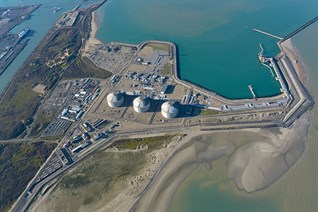DT Midstream joins Cheniere Energy in a collaboration to quantify, report GHG emissions
DT Midstream Inc. announced that it has joined Cheniere Energy Inc., the largest U.S. producer of LNG, other midstream companies, technology providers, and leading academic institutions to implement quantification, monitoring, reporting and verification (QMRV) of GHG emissions from midstream systems serving Cheniere’s LNG terminal.

The collaborative intends to improve the overall understanding of GHG emissions and further the deployment of advanced monitoring technologies and operating protocols throughout the natural gas supply chain.
Researchers from Colorado State University and the University of Texas will conduct the QMRV work. The measurement protocol, designed by Cheniere et al., will be field tested at facilities owned and operated by partners of the collaborative, including DT Midstream’s Haynesville assets.
The midstream focused QMRV program involves a combination of ground-based, aerial, and drone-based emissions monitoring technologies. The QMRV program requires emissions monitoring over at least a six-month period, with all data independently analyzed and verified by the project’s academic partners.
“Today marks yet another significant step in DT Midstream’s journey to carbon neutrality. Joining this collaborative is one of the many steps our team has taken to position DT Midstream on a path to net zero by 2050. It will also serve as an important step towards providing a carbon neutral pathway for customers interested in reaching Cheniere’s LNG export terminal,” said David Slater, DT Midstream’s CEO.
“Collaboration with our midstream partners is a vital part of Cheniere’s efforts to measure and verify our emissions and look for opportunities for reductions across our value chain,” said Scott Culberson, Cheniere’s Senior Vice President of Gas Supply. “DT Midstream is a critical teammate in this effort to provide cleaner sources of energy around the world, and their leadership will help to improve the environmental performance of U.S. natural gas and LNG.”

- ExxonMobil halts 1-Bft3d blue hydrogen project in Texas
- Aramco and Yokogawa commission multiple autonomous control AI agents at Fadhili gas plant
- Ukraine will resume gas imports via Transbalkan route in November
- Mitsubishi to inject $260 MM into Brunei LNG project
- Freeport LNG (U.S.) on track to take in more natgas on Thursday after unit outage



Comments